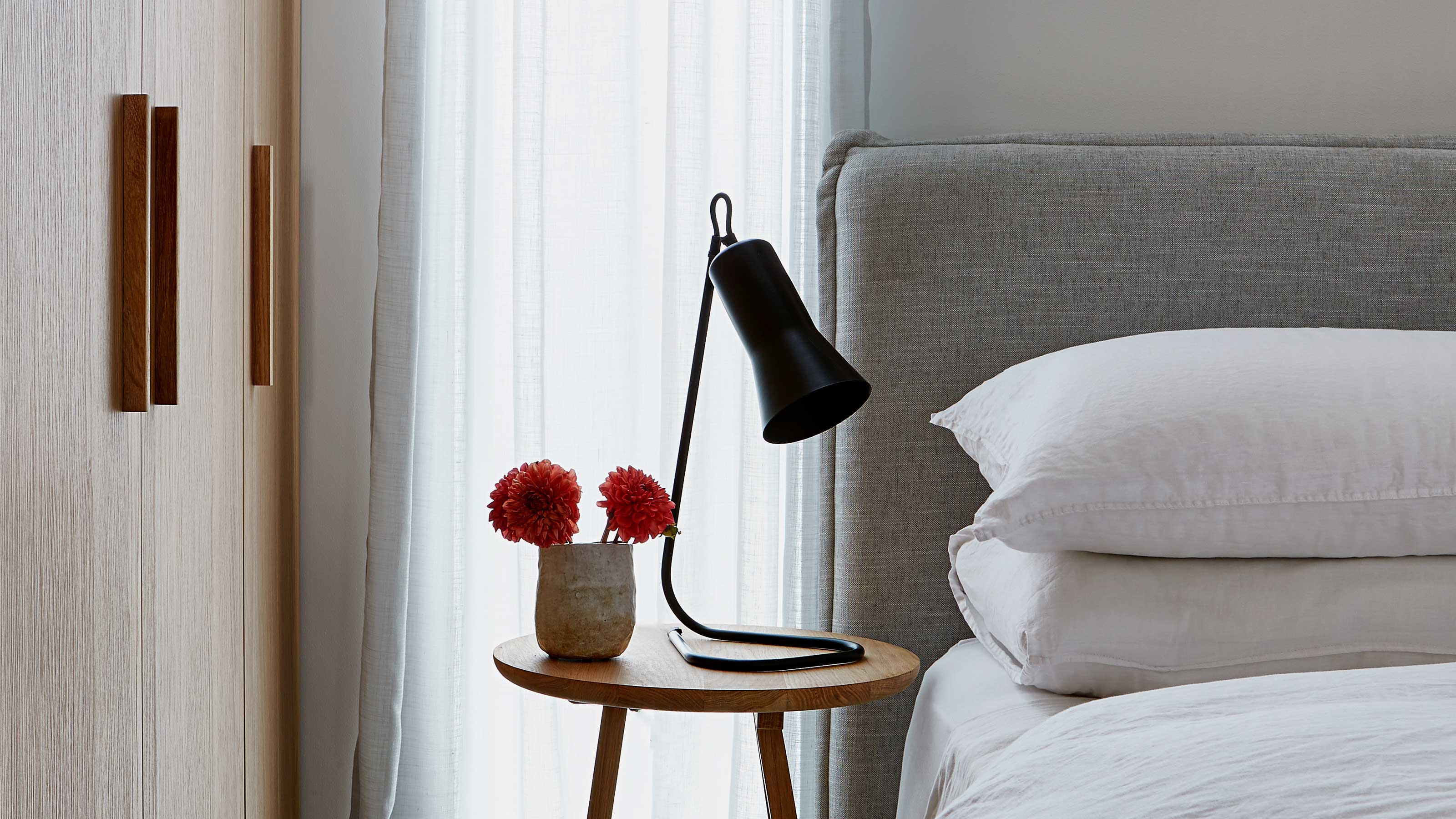
At this point, you probably know all about the bedroom colors that help promote better sleep, but what about so-called colored noises? Some hail these static-like sounds as the secret to a sound slumber, but with multiple to choose from, how do you know which is best?
If you don't know what I'm talking about, there's at least a high likelihood that you've heard of white noise. It's that fuzzy background sound that people use to help them relax or concentrate. What you might not realize, however, is that there's a whole spectrum of colored sounds out there and, while they might all sound the same to the untrained ear, they each have their nuances.
'Like colors which fall on a spectrum of wavelengths of light which correspond to the colors that we as humans see, noises can also be heard on a spectrum as well,' explains Dr. Abhinav Singh, Medical Director and sleep expert at Sleep Foundation. 'The human ear can hear noises from 20 to 20,000 Hz.' Each colored noise combines a variety of frequencies across this spectrum, resulting in a different pitch. The question is, which one helps you sleep better? We asked some experts to find out.
How many colored noises are there?

The majority of people are only familiar with white noise, while a few may have heard of its closely related cousin, pink noise. Very few, however, realize that there's an entire rainbow of colored sounds out there (well, almost).
While white noise is made up of all the frequencies audible to the human ear, other colored sounds are created by adjusting the combination of frequencies played together. That means that really, there's an infinite number of colored noises, all with a nuanced pitch, but as Dr Abhinav Singh of Sleep Foundation explains, 'there is no clear definition of amplitude and frequency, so it becomes challenging to stratify these'. Generally, though, the most widely excepted definitions are white, pink, and brown.
Others, such as grey, green, and blue, are more informally defined. Green noise, for example, is a variation of white noise in the middle of the spectrum that mimics sounds heard in nature. Blue noise on the other hand is primarily concentrated at the high-frequency end with limited deep tones, said to help block out external sounds.
What color noise is best for sleep?
Here, we'll take a look at the most widely accepted sounds - white, pink, and brown - since they're the ones with the most scientific research. So, what's the difference between them?
'White noise, brown noise, and pink noise all fall on a spectrum of different frequencies such as Hz to KHz,' explains Dr Abhinav. 'White noise has uniform amplitude throughout all frequencies while pink noise is felt to be heavier on mid to lower frequencies. In contrast, brown noise is felt to be even heavier on lower frequencies than pink noise; examples in nature include thunder and waterfalls.'
When pitting brown vs pink vs white noise against each other, really, the type that helps you sleep best is down to personal preference. While some prefer the lower rumble of brown noise, others prefer the more mid-tone sound of pink noise or the higher pitch of white. However, scientific studies suggest pink comes out on top.
'When compared to all color noises, pink noise has consistently proven itself at the best overall color noise for sleep,' explains Carlie Gasia, a sleep expert and Certified Sleep Science Coach at Sleepopolis. 'Its lower frequency is gentle enough to aid light sleepers, where other color noises may prove too distracting. Also, studies show that it can help you spend more time in deep sleep, in turn helping you wake up with more energy.'

That said, the jury is still out. The bottom line is that no single color has been definitively proven to come out on top. 'While there are many studies ongoing and completed, all with varying results, research remains inconclusive on which kind definitely improves sleep architecture quality,' says Dr Abhinav.
Dr. Nilong Vyas, another sleep expert at Sleep Foundation, agrees. 'More research is needed to know what is "ideal," but for now, people should use the sound that allows the quickest transition into sleep,' she says.
The best sound setting for your bedroom then remains down to you. But, if we were to hedge our bets, we'd probably suggest starting off with pink noise and seeing how it works for you. Who knows, that deep sleep you're craving could be easier to achieve than you imagined...
Ready to try them out?

Want to give all these noises a try? Try this noise machine from SoundMe, available at Amazon, which allows you to do so without relying on your phone. The compact speaker can be plugged into your main source or operated by the battery backup and plays 30 different non-loop sounds including white, pink, and brown noise, as well as rain sounds.







